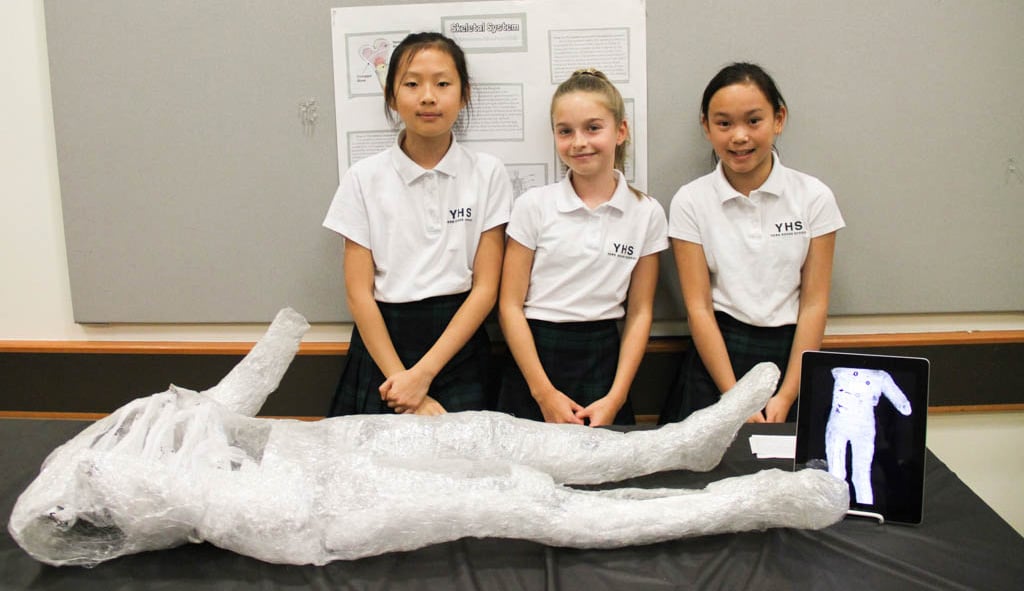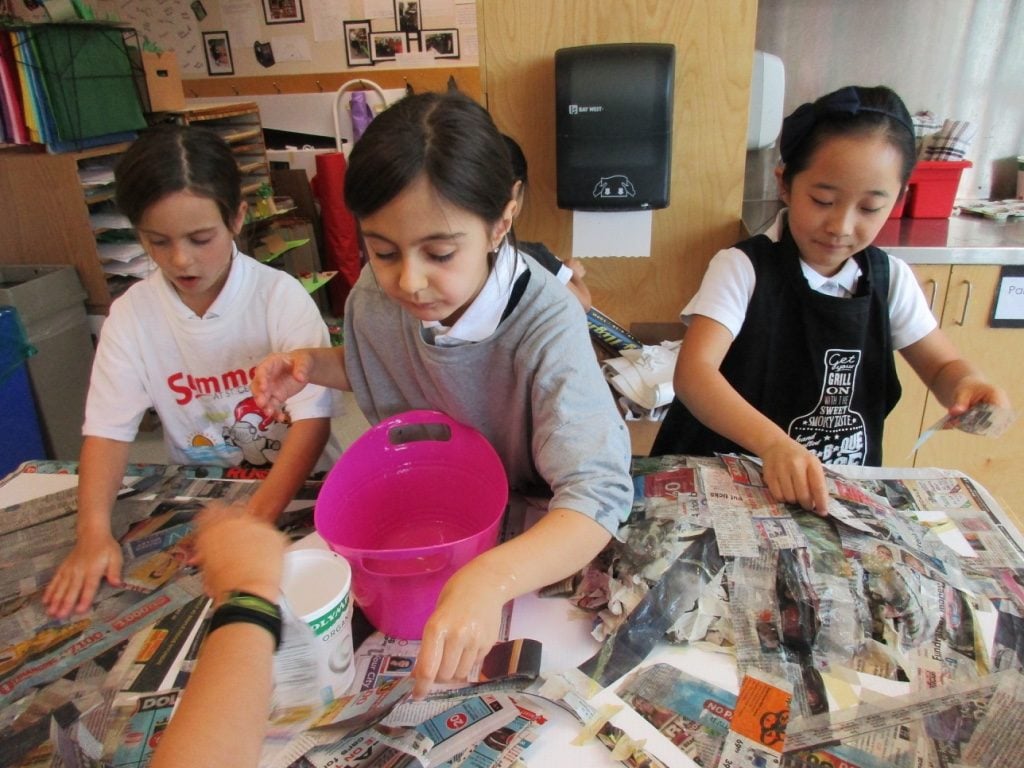This year, our Grade 5 students had the opportunity create their own Body Worlds Exhibition, which was an extension of the Grade 5 science unit on human body systems. Working in groups of four, students were given the task to create their own life-size 3D body system model. A STEAM project, each group researched their system, learned about how it works and looks, and brainstormed ways to accurately and artistically illustrate it.
Students were inspired by Body Worlds exhibitions that travel the world educating people about the human body and how it works. Students were also introduced to contemporary artist, Mark Jenkins, who makes packing tape castings of people and places them in public spaces. The packing tape castings became the frame for our systems.
To illustrate their body system, groups worked collaboratively to design a scientific and artistic model using a range of materials from fabric, papier-mâché, model magic, wire, string, and recyclables. While creating, students used trial and error to determine the right materials and techniques to create their systems. To demonstrate their knowledge of their systems, students created ThingLinks (interactive images) to label their models and the important parts of the body system.
On April 19, the students showcased their work in the Gail Ruddy Foyer and the Bentley Room, to an enthusiastic crowd who were all suitably impressed with the creativity and knowledge that each team demonstrated. We interviewed a couple of the groups so that we could share with our wider community.
















